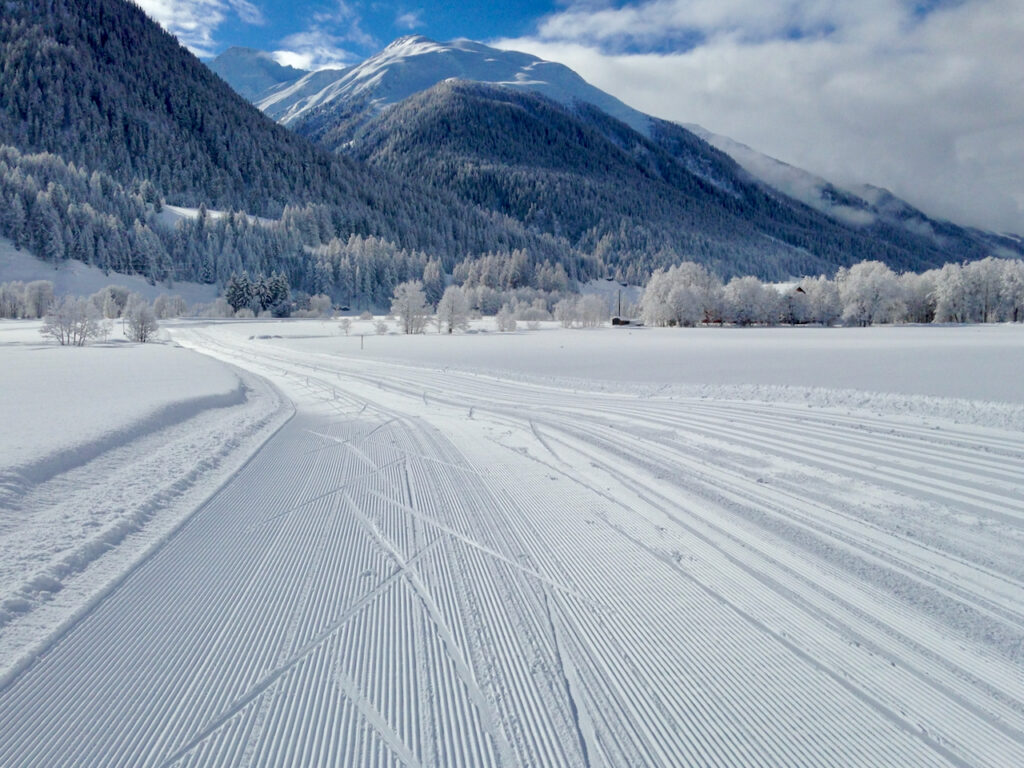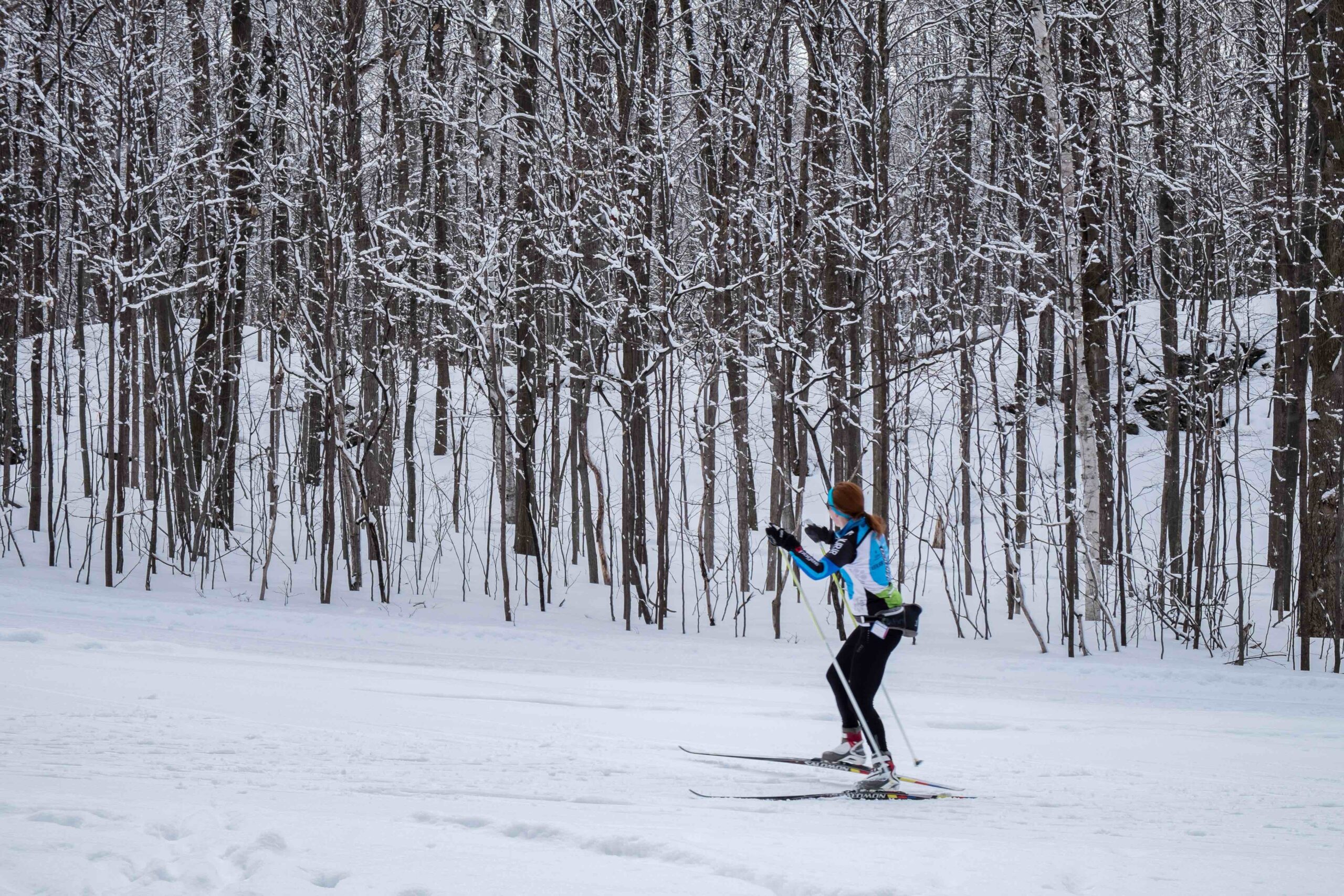Winter has arrived in many places and summer athletes are increasingly found cross-country skiing. Training on the narrow slats is often touted as the optimal winter training. Triathletes in particular want to get great benefits from it for all three disciplines.
Cross-country skiing demands all muscle groups.
In fact, cross-country skiing involves virtually all muscle groups and challenges the cardiovascular system. By gliding forward, the body is not exposed to any blows and the risk of injury is generally low. That’s why cross-country skiing is not considered one of the healthiest sports of all for nothing.
But is the benefit for triathletes really that great?
Or can cross-country skiing also affect my form negatively?
Cross-country skiing is very healthy, but technically also highly demanding. The various muscle groups and the arms and legs must be properly coordinated. In addition, there is an unstable, slippery surface that demands everything from the balance.
The difficulty lies in this technical complexity.
Technique makes the difference.
After all, without the appropriate technical skills, a great deal of effort is required to get off the ground at all. The pulse rate rises rapidly and exhaustion soon sets in. Without consciously pressing the gas pedal, an hour in the anaerobic threshold range quickly adds up.
Accordingly, winter vacations or the walk to the nearby cross-country skiing track each turn into quite a strain. Anyone who also runs (intervals) and trains on the roller runs the risk of coming out of the winter exhausted instead of having laid a solid foundation with a lot of basic training.

Cross country todos for endurance athletes.
For endurance athletes who want to achieve great things again in spring and summer, this means:
- So when cross-country skiing, it’s better to take it really easy and slow down the pace!
- Pay attention to technique, keep an eye on your heart rate and allow yourself enough recovery time after, but also during the workout.
- Of course, fast, very intense sections are also allowed and the fun should not be neglected. However, this should be the exception rather than the rule.
Physiological requirements.
A significant influence on cross-country skiing training is the physiological prerequisite, or fitness level. Athletes with a maximum oxygen uptake (VO2max) of less than 55 ml/kg/min and poor technique are particularly likely to run too intensively.
Their “engine” doesn’t allow them to compensate for modest technique with power and still be in the basics.
In this case, it is all the more important to leave the urge for speed at home and, if necessary, to invest in a lesson with a cross-country skiing instructor. But even very well trained athletes are well advised to restrain themselves and not to disregard the heart rate monitor.
Topographical Challenges.
In addition to fitness, the terrain also plays an important role in cross-country skiing. In many regions (especially in Switzerland) cross-country trails with long flat sections are extremely rare (highly recommended in this regard: Studen/SZ, many sections in the Engadine – and the Goms). Mostly the laps are peppered with climbs and challenging passages. Such conditions make easy running even more difficult.
Therefore: rather run a few laps on the flat practice track instead of exhausting yourself on the hilly terrain.
Height
Another factor that makes it difficult for us to glide across the trails in a relaxed manner is altitude. With increasing altitude, the partial pressure of oxygen decreases and we have to ventilate more air to get the same amount of oxygen. The heart rate increases and it is much more difficult for us to achieve the same performance as in the flatlands.
Accordingly, at altitude it is necessary to regulate the intensity even further down so as not to overtighten the motor.
Skating versus classic technique.
Most triathletes strap on skating skis exclusively and forgo running in the classic technique. The skating technique is considered easier, more dynamic and faster. However, the classic technique is an excellent alternative for several reasons. On the one hand, running in the classic style is very close to running in terms of the motion sequence. In particular, it strengthens the calf muscles, which sometimes cause problems when jogging. On the other hand, you can regulate the intensity much easier. Balance is less challenged and when your heart rate rises, you can temporarily switch to “ski touring” to recover.
Conclusion
Based on the above points, the impression could now actually arise that cross-country skiing is more of a curse than a blessing for triathletes.
Well, this is of course only conditionally true.
If you leave the search for speed rush and the desire for burning muscles at home more often and consciously rein yourself in, then nothing will stand in the way of training on the trails. By no means should the impression be given that cross-country skiing is a bad winter training for triathletes. It’s just that it’s important to lay a solid foundation in the winter so you don’t get tired and burnt out before your first triathlon competitions. Therefore again: Take it easy on the narrow slats! Give yourself enough recovery time, work on your technique, run in classic style if possible and let the “racing dog” off the leash only from time to time. This way you will benefit from cross-country skiing and emerge from the winter stronger.
